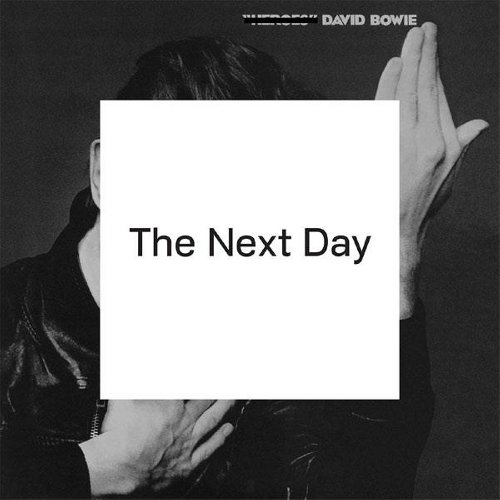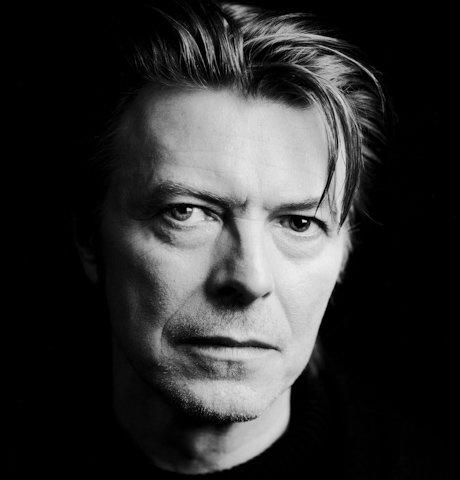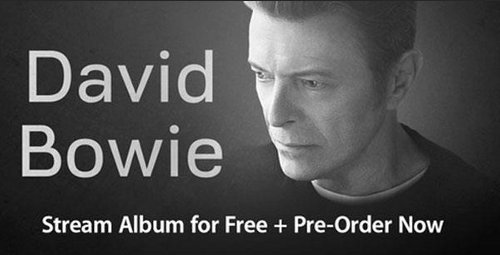
[an abridged version is up on Ryan’s Smashing Life]
What is most compelling about David Bowie’s first studio album in a decade, The Next Day, is not the brilliance of this album, but the brilliance of the timing of this album. A key part of Bowie’s genius, from his earliest incarnations to the present day, is his uncanny ability to be at the right place at the right time–with the right musical statement. He has always been the man of the hour, whatever the hour happens to be.
For the past 10 years, our Chief Observer who was always there, holding up a mirror to our hopes and dreams, our fears and insecurities, our pop culture and sacred cows, had covered that mirror with a dark shroud and walked away from public life. He went off to live his life, and left us to live ours, unobserved and unrecorded. But it’s 2013, and Bowie’s back. Why now? Maybe it’s because we need him, or because he needs us. Or it’s that all this clutter and confusion, the growing chasm of human experience and sense of alienation feels too important to be just sitting and watching from the sidelines. Perhaps he feels the need to weigh in and shine his light upon this time in our collective history. Maybe it’s less a concern about legacy, and simply an eagerness to join in on the conversation.

It’s a marvel that Bowie was able to record an album in New York City over a period of two years without anyone catching wind of it. This is proof that even in our hyper-connected digital age, it is possible to keep a secret, so long as you have trusted friends and collaborators. For David, this began with long-time ally Tony Visconti, who helped with string arrangements on the album, and is credited for bass, guitar, strings and even recorder. Drummer Sterling Campbell began recording with Bowie in 1991, and joined his band the following year. Gerry Leonard was a guitarist and musical director on David’s Heathen and Reality albums. Others were brought in as needed on particular songs, such as Earl Slick, who first performed with David in 1974. Gail Ann Dorsey has been contributing bass and vocals on Bowie albums and tours since the mid ’90s. Other guests include guitarist David Torn, drummer Zachary Alford, bassist Tony Levin, saxophonist Steve Elson and jazz pianist Henry Hey. There’s also a quartet of classical string players. With Bowie himself on acoustic guitar and keyboards, this wealth of musical talent create a thick atmospheric forest. [For detailed track information, see the album’s Wikipedia page.]
Patterns and melodies rub up against each other in discordant ways at obtuse angles, bringing an industrial tension. The music, densely layered, is a perfect soundtrack to modern life’s complexities and contradictions, the wrongs and sins perpetrated over our collective history. These days, our beloved thespian immerses himself in everything from English and Russian history to British comedy and police dramas (the Office, Spiral, The Shield). The album’s subject matter is a hodge-podge of our world–religious hypocrisy, life and love in the Internet age, London’s glam rock scene, gun violence in U.S. schools, the lure of fame and celebrity, politicians and public figures, alienation and mental health.
“Where Are We Now” is Bowie at his most introspective, a fitting way to come out of his temporary retirement. The song looks at a divided Berlin during the years when he lived there, as he asks the global (and perhaps also personal) question, “Where are we now?” Bowie has never given us the answers, but he definitely knows all the right questions for some intriguing dialogue. Let the conversation begin!
Highlights and Random Thoughts
The Next Day — In my mind, this song strongly invokes the dense musical thicket of Lodger. It relates some grim scenes of public torture and killings. Apparently it’s about a particular historical event, though my personal take is that it’s addressing religious hypocrisy. Or I could be wrong.
“They can work with Satan while they dress like the saints
They know god exists for the devil told them so
They scream my name aloud down into the well below.”
The Stars (Are Out Tonight) — Our torrid and disturbing relationship with celebrities (and maybe Bowie’s relationship with his own celebrity). Hmm… stalked by his own creations?
“We will never be rid of these stars but I hope they live forever.”
Love Is Lost — Beautiful tension and dissonance gives this song a disturbing feel. Possibly about the loss of love in the Internet age. I see it as the loss of innocence at one’s emergence into adulthood.
“You know so much, it’s making you cry
You refuse to talk, but you think like mad
You’ve cut out your soul and the face of thought
oh what have you done, oh what have you done?”
Where Are We Now? — A somber, melancholy and wistful reflection on Berlin’s history (and Bowie’s) in the late 1970s, from a current perspective. I see an awakening to the world’s tragedies, a new self-awareness and realization, a loss of ego and a critical assessment of the past. It’s quite sad, but there’s hope in the return to life’s basic truths in order to find salvation and purpose.
“Where are we now, where are we now?
the moment you know, you know, you know.
As long as there’s sun
As long as there’s sun
as long as there’s rain
as long as there’s rain
as long as there’s fire
as long as there’s fire
as long as there’s me
as long as there’s you.”
I’d Rather Be High — The absurdity and tragedy of young soldiers in war. This song is apparently about WWII, but unfortunately it’s timeless. Locked in teenage bodies, they’re thrust into impossible situations. A youthful, psychedelic sound forms an unlikely backdrop for the terrors of the battlefield.
“I’m seventeen my looks can prove it
I’m so afraid that I will lose it
I’d rather smoke and phone my ex
be pleading for some teenage sex
Yeah.
I’d rather be high
I’d rather be flying
I’d rather be dead
or out of my head
than training these guns on those men in the sand
I’d rather be high.”
Heat — A stark and haunting minimalist dirge gives The Next Day an ominous ending. Bowie’s monochrome vocals are stunning, like a Buddhist chant. The eerie strings sound like birds crying. This might be about a loss of self, schizophrenia or some other form of mental illness. Is he referring to an actual prison, or is this about being imprisoned by one’s upbringing or sense of duty and obligation?
“And I tell myself, I don’t know who I am
And I tell myself, I don’t know who I am
My father and (ran?) the prison
my father and the prison…
He believed that love is theft.
But I am a seer, I am a liar.”
Verdict: This is Bowie at his deep, unfathomable best. Not for lightweights, but those who dive right in and aren’t afraid of challenging music will be richly rewarded.
The official 4-day release schedule for The Next Day reads like a roll call at the United Nations: Australia, Austria, Belgium, Czech Republic, Finland, Germany… Asia, Croatia, France, Greece, Hong Kong, Serbia, South Africa, UK… Brazil, Canada, Mexico, Taiwan, Japan, Turkey, USA. Pre-orders have already put the album at #1 on iTunes charts in 34 (that’s THIRTY-FOUR) countries. Welcome back, David.
web | facebook | twitter | youtube | wikipedia
share this:

Leave a Reply